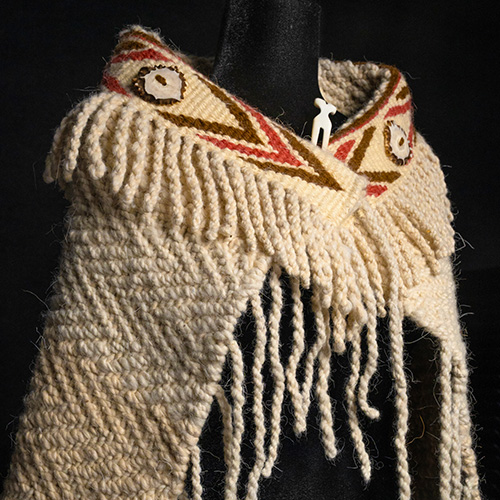Faced with budget cuts, the Dance Program has had to put its popular large introductory course for non-majors, Dance 101, on hold. The course requires a level of staff support that is not currently sustainable. But in its place is a new offering: an online course, Understanding Dance, which is more focused on theory than practice.
The online course is the brainchild of Jennifer Salk, associate professor and Donald E. Petersen Endowed Fellow. “I’d read an article a few years ago about an online dance appreciation course and it planted a seed,” says Salk, who developed the course with input from Dance Program director Betsy Cooper. The class, introduced Autumn Quarter 2010, is taught by Rhonda Cinotto (MFA ‘07) with teaching assistants Matthew Henley (MFA ‘10) and Heather Raikes (PhD candidate, DXARTS).

Students who anticipate sitting at their computer all quarter are quickly disabused of that notion. Although lessons are viewed online and students must post regularly to a class discussion forum, they also must attend three dance concerts, participate in two dance classes (in a dance form unfamiliar to them), and complete three movement assignments, which they videotape and post to the course site, accessible only to classmates. “Once students see how engaged they need to be, some drop the class,” admits Salk.
The course first explores how to look at, discuss, and write about dance. “Dance has its own lexicon, as does each individual dance,” says Salk. “Students look at reviews to see how people talk about dance and then write their own reviews.” Next, through a study of collage, students discover how art forms borrow from one another. Later in the course they explore how an individual’s background and biases influence his or her experience of art. An assigned reading about the Nacirema tribe helps make the point.
“The reading is a one-page assessment of the tribe, supposedly written by an anthropologist,” says Salk. “Only after reading it do the students learn that Nacirema is American spelled backward.” A follow-up assignment has them writing about one of two popular dance videos—one by Madonna, the other by choreographer Rennie Harris—as if they were an anthropologist encountering the video for the first time. “The assignment is a way to help people find ways into things they think are weird,” explains Salk.

Toward the end of the quarter, students look at “dozens and dozens of clips of different kinds of dance” to explore what they like, don’t like, and why. For their final movement exercise, they choose a dance clip they don’t like and revise the dance in ways they feel improve it. They perform and submit the reworked piece along with an essay explaining their choices.
“Before that final unit, we try to keep students from coming up with quick assumptions,” says Salk. “Now they are allowed to have opinions but must back them up.”
Cinotto, who had previously taught Dance 101, admits that she had some concerns about teaching a dance course online, particularly given her preference for face-to-face interaction. But she has found that it’s an apples-oranges situation. The former course, being studio-based, provided a more visceral experience through movement. The online course provides a deeper understanding of dance theory, history, and criticism.
“I was surprised by how much I actually enjoyed teaching it,” says Cinotto. “I enjoyed reading people’s posts about what they saw and read. And when they submitted their movement videos, it was fun to finally get to see the faces of students who I’d come to know through their writing voice.”
The students' take on the class? It was "extremely insightful and eye-opening," offers one participant. "I didn't foresee the intricacies involved in dance. I thoroughly enjoyed the course and left with a considerable amount of knowledge on the subject."
After its autumn quarter trial run, Understanding Dance was open to a larger number of students for winter quarter. It was fully enrolled on the first day of registration.
More Stories

A Healing Heart Returns
In February, the UW Symphony will perform a symphony that Coast Salish elder Vi Hilbert commissioned years ago to heal the world after the heartbreak of 9/11. The symphony was first performed by the Seattle Symphony in 2006.

Coast Salish Traditions are "Woven in Wool" at the Burke
A Burke Museum exhibit, co-curated by Coast Salish weavers and Burke curators, highlights the importance of weaving to Coast Salish communities.

A "gesture" to jump-start careers
To prepare students for professional success, the UW College of Arts and Sciences offers “gesture,” a mock startup company where student interns gain skills that employers seek.